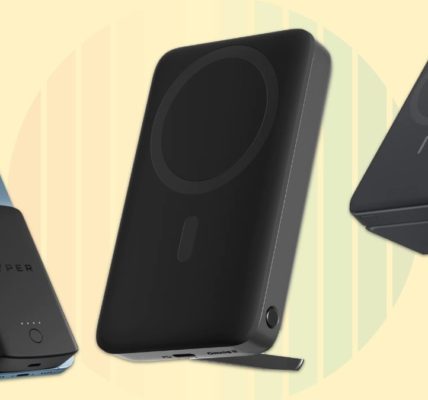The iPhone 15 Pro brings over 50 new features and improvements to Apple’s high-end smartphones compared to the iPhone 13 Pro, which was released two years prior. This buyer’s guide breaks down every major difference you should be aware of between the two generations and helps you to decide whether it’s worth upgrading.
The iPhone 13 Pro debuted in 2021, introducing a brighter display with ProMotion technology for refresh rates up to 120Hz, the A15 Bionic chip, a telephoto camera with 3x optical zoom, Macro photography and photographic styles, Cinematic mode for recording videos with shallow depth of field, ProRes video recording, a 1TB storage option, and five hours of additional battery life. The iPhone 13 Pro was discontinued upon the announcement of the iPhone 14 Pro in 2022, but it is still possible to get hold of it second-hand.
Our guide helps to answer the question of how to decide which of these two iPhone models is best for you and serves as a way to clearly see the all of the differences that the iPhone 15 Pro brings to the table. This article focuses on the iPhone 13 Pro and iPhone 15 Pro, but to understand the differences between the iPhone 14 Pro and iPhone 15 Pro, see our other buyer’s guide:
iPhone 14 Pro vs. iPhone 15 Pro Buyer’s Guide: 30+ Upgrades Compared
Although the iPhone 13 Pro and iPhone 15 Pro share most of their basic features, the iPhone 15 Pro offers a large number of notable upgrades, such as a titanium design, 48-megapixel main camera, always-on display, Action button, USB-C port, and A17 Bionic chip.
iPhone 13 Pro
iPhone 15 Pro
Surgical-grade stainless steel chassis with squared-off edges
Aerospace-grade titanium chassis with contoured edges
More repairable design
7.65mm depth
8.25mm depth (0.6mm thicker)
204g or 240g weight
187g or 221g weight (17g or 19g lighter)
“Notch” TrueDepth camera array
TrueDepth camera array with Dynamic Island
Thinner borders around the display for slightly smaller overall footprint
1,200 nits peak brightness (HDR)
1,600 nits peak brightness (HDR) and 2,000 nits peak brightness (outdoor)
Always-On display
Ring/Silent switch
Action button
A15 Bionic chip (5nm)
A17 Pro chip (3nm)
5-core GPU
6-core GPU with with hardware-accelerated ray tracing
Dedicated AV1 decoder
6GB memory
8GB memory
12-megapixel main camera with ƒ/1.5 aperture
48-megapixel main camera with ƒ/1.78 aperture
12-megapixel ultra-wide camera with ƒ/1.8 aperture
12-megapixel ultra-wide camera with ƒ/2.2 aperture
12-megapixel telephoto camera with ƒ/2.8 aperture and sensor-shift optical image stabilization
12-megapixel telephoto camera with ƒ/2.8 aperture and larger sensor, folded tetraprism design, optical image stabilization, and autofocus 3D sensor-shift module (Pro Max only)
12-megapixel front-facing camera with ƒ/2.2 aperture
12-megapixel front-facing camera with ƒ/1.9 aperture and autofocus
Anti-reflective coating on camera lenses
True Tone flash
Adaptive True Tone flash
0.5x, 1x, 2x, and 3x optical zoom
0.5x, 1x, 2x, and 3x optical zoom (5x instead of 3x on Pro Max)
13mm, 24mm, 28mm, 35mm, and 77mm focal length picker (120mm instead of 77mm on Pro Max)
24- and 48-megapixel super-high-resolution photos
Photonic Engine
Smart HDR 4
Smart HDR 5
Portrait mode with Focus and Depth Control
Next-generation portraits with Focus and Depth Control
Night mode and Night mode portraits
Improved Night mode and Night mode portraits
Shoot and instantly transfer 48-megapixel ProRAW images to Mac via USB 3
Record video directly to an external drive
ProRes video recording up to 4K at 30 fps
ProRes video recording up to 4K at 60 fps with external recording
Cinematic mode for recording videos with shallow depth of field (1080p at 30 fps)
Cinematic mode for recording videos with shallow depth of field (4K HDR up to 30 fps)
Action mode
Log video recording
Academy Color Encoding System
Record spatial video for Apple Vision Pro
Improved audio quality on phone calls
Bluetooth 5.0
Bluetooth 5.3
Wi‑Fi 6 connectivity
Wi‑Fi 6E connectivity
Thread networking technology
First-generation Ultra Wideband chip
Second-generation Ultra Wideband chip (connects from 3x further away)
Precision Finding for Find My friends
Emergency SOS
Emergency SOS via satellite
eSIM optional
eSIM only (in the U.S.)
Lightning port
USB-C port
USB 2 transfer speeds (up to 480Mb/s)
USB 3 transfer speeds (up to 10Gb/s, 20x faster)
DisplayPort support for up to 4K HDR video output
Support for Qi wireless charging
Support for Qi 2 wireless charging
22- or 28-hour battery life
23- or 29-hour battery life
Setting to prevent charging above 80%
Battery manufacture date, first use, and cycle count information in Settings
128GB, 256GB, 512GB, and 1TB storage options
128GB, 256GB, 512GB, and 1TB storage options (no 128GB tier on Pro Max)
Silver, Gold, Graphite, Sierra Blue, and Alpine Green color options
Natural Titanium, Blue Titanium, White Titanium, and Black Titanium color options
Overall, the iPhone 15 Pro is a significant upgrade over the iPhone 13 Pro, introducing meaningful quality-of-life features like the USB-C port and Action button that change the methods of interaction with the device. The new, considerably more lightweight titanium design, slimmer borders around the display, and contoured edges result in a noticeably different aesthetic and feel in the hand.
The iPhone 15 Pro also brings major advancements to photography and videography, adding larger apertures, an Adaptive True Tone flash, a 48-megapixel main camera for high-resolution images and, on the larger model, a telephoto camera with 5x optical zoom. Software features such as Photonic Engine, Smart HDR 5, Next-generation portraits, Action mode, and a host of professional videography features like external recording and Log also take the photography and videography capabilities of the device to the next level.
This is not to mention fast data transfer via USB 3, satellite connectivity, new color options, the second-generation ultra wideband chip, and the A17 Pro chip – Apple’s first chip made with a 3nm fabrication process, which radically improves the gaming capabilities of the device.
Due to the scale and breadth of these improvements, most iPhone 13 Pro will be able to justify upgrading to the iPhone 15 Pro, especially if they value the new design, USB-C port, Action button, and camera improvements. It is only worth sticking with the iPhone 13 Pro if you are holding off for an even more substantial upgrade in the future, but many users will see tangible benefits by upgrading now.
This article, “iPhone 13 Pro vs. iPhone 15 Pro Buyer’s Guide: 50+ Differences Compared” first appeared on MacRumors.com
Discuss this article in our forums




